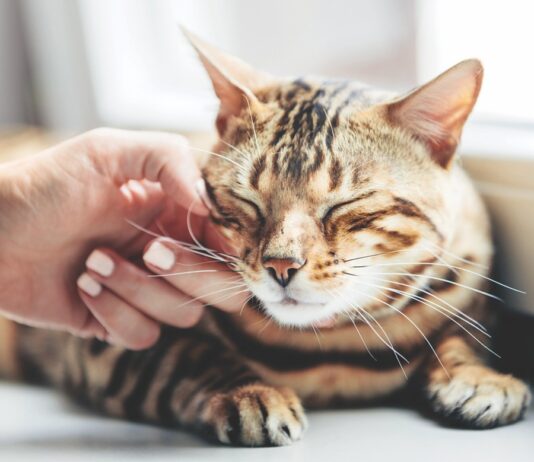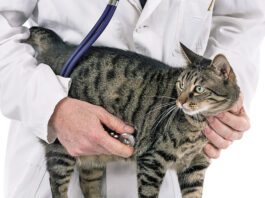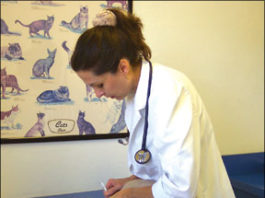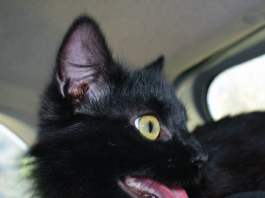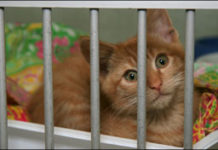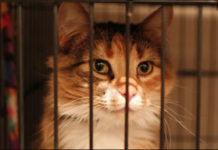Short Takes: August 2010
Diabetes mellitus (DM) is a common endocrine disease in cats, and it is becoming a model for DM in humans because cats develop a form of the disease that is similar to the human type-2 diabetes mellitus. Amylin is a normal secretory product of pancreatic beta cells, and it plays an important role in controlling nutrient fluctuations. Amylin has become an established therapy along with insulin in human diabetics because it reduces post-prandial glucagon secretion and slows gastric emptying. This study ("Amylin reduces plasma glucagon concentration in cats," The Veterinary Journal, 2010) was the first to investigate if amylin reduces plasma glucagon levels in cats.
Short Takes: June 2010
Pet owners may not realize that retention of the tablets or capsules of certain drugs (e.g., doxycycline and clindamycin) in the esophagus of the cat can cause inflammation and stricture formation. Experts currently recommend that cats should never be given medication "dry" - instead, any pill or capsule should be followed with a food treat or a bolus of water. This study ("A comparative study evaluating the esophageal transit time of eight healthy cats when pilled with the FlavoRx pill glide versus pill delivery treats" in the Journal of Feline Medicine & Surgery, 2010) was designed to evaluate the esophageal transit time of tablets and capsules when administered with either the FlavoRx pill glide or Greenies Pill Pockets.
Short Takes: May 2010
A questionnaire-based tool was used in this study ("A Study of Owner Observed Behavioral and Lifestyle Changes in Cats with Musculoskeletal Disease Before and After Analgesic Therapy" in the Journal of Feline Medicine and Surgery, 2009) to identify behavioral and lifestyle changes that are associated with chronic pain in cats. The changes were grouped into four behavior categories (mobility, activity, grooming and temperament).
Short Takes: April 2010
Ingestion of foreign bodies - including string-like objects - is a common problem seen in feline veterinary medicine. Foreign bodies may cause partial or complete gastrointestinal (GI) obstruction, which results in disturbances of fluid and electrolyte balance as well as dehydration. Damage to the intestinal tract can also occur. This study ("Gastrointestinal foreign bodies in dogs and cats: a retrospective study of 208 cases" in the Journal of Small Animal Practice, 2009) reviewed the records of 208 cases of GI foreign bodies in dogs and cats that were brought in to the RSPCA Greater Manchester Animal Hospital in the UK from June 2003 to May 2007.
Short Takes: March 2010
Primary septic peritonitis is an abdominal infection without a primary focus, such as a perforated bowel. The most common cause in cats is feline infectious peritonitis (FIP). Unfortunately, little is known about primary bacterial septic peritonitis in cats. The investigators (" Primary bacterial septic peritonitis in cats" in the Journal of the American Animal Hospital Association, Nov-Dec 2009) examined the medical records of twelve cats diagnosed with primary bacterial septic peritonitis and identified significant characteristics associated with this condition.
Short Takes: December 2009
Pet Style News has awarded Soft-Hearted Products their "Editors Choice Award" for best pet memorial product. Every year, Pet Style News magazine searches for the most innovative new pet products. According to Pet Style News, the Soft-Hearted Pillow is "a major departure from the wood, ceramic and stone urns available on the market. This product gives the mourning pet owner a way to continue to hold and hug the lost pet in the form of a velvet-soft pillow with the pets ashes safely contained inside a zippered pouch at the center."
Short Takes: January 2010
A common disease in cats, upper respiratory tract disease (URTD) can spread quickly among cats residing in animal shelters. These infections cause discomfort in the animals, consume vital personnel and financial resources and limit adoptions. In a large urban shelter in the northeast United States, 531 kittens, 701 litters and 2,203 adult cats were observed during their stays on a daily basis over a period of 50 weeks for signs of URTD ("Descriptive epidemiology of feline upper respiratory tract disease in an animal shelter" in the Journal of Feline Medicine and Surgery, 2009).
Short Takes: February 2010
Some involved with animal welfare are critical of free adoptions of adult cats, believing it devalues the cat in the adopters eyes, or it may attract adopters who are unable to fulfill the financial responsibilities of cat ownership. Advocates believe waiving the fee for adult cats will enhance rates of adoptions, and provide opportunities to educate owners who may otherwise adopt from neighbors or may respond to "free to good home" ads.
Microchips to the Rescue
A study published in the Journal of American Veterinary Medical Association ("Characterization of animals with microchips entering animal shelters," July 2009) determined that 7,704 microchipped animals entered 53 animal shelters between August 2007 and March 2008. Of this number, strays made up more than half (53 percent), with the remainder considered as owner-relinquished animals (41.9 percent) and other (5.1 percent). The results showed that animal shelters were able to find the owners of three-fourths of stray dogs and cats with microchips. The sucess in finding owners was higher in dogs, animals that were purebred and animals that were spayed or neutered. Animal shelters had a much higher likelihood of finding an owner when the owner information was in the shelters own database or registered with a microchip registry. The results emphasize the importance of the registration process in successfully reuniting pets and owners.
Short Takes: 10/09
House Resolution 3501 - more commonly referred to as the Humanity and Pets Partnered Through the Years, or HAPPY Act - would amend the Internal Revenue Code to allow an individual to deduct up to $3,500 for "qualified pet care expenses."These expenses are defined as "amounts paid in connection with providing care (including veterinary care) for a qualified pet other than any expense in connection with the acquisition of the qualified pet." "Qualified pet" is defined as "a legally owned, domesticated, live animal." It does not include animals used for research or owned or used in conjunction with a trade or business. Introduced on July 31, the measure was drafted in conjunction with data from the American Pet Products Associations National Pet Owners Survey. It has been referred to the House Committee on Ways and Means. The Pet Industry Joint Advisory Council (PIJAC) issued a Pet Alert on Aug. 5 supporting the proposal. "Providing pet owners the opportunity to deduct pet care expenses is an important step towards ensuring that pet owners provide adequate veterinary and other necessary pet care," PIJAC stated. "It encourages responsible pet ownership and will hopefully reduce the abandonment of pets by people struggling as a result of the economic downturn."
Short Takes: 09/09
Governor Linda Lingle, accompanied by State Civil Defense Director, Major General Robert Lee, highlighted the importance of emergency preparedness by showcasing Hawaiis ongoing emergency shelter programs for people with special health needs and pet-friendly shelters. State Civil Defense, working with the State Department of Education, county civil defense agencies, American Red Cross, Department of Health, Hawaiian Humane Society and other public and private sector partners, has designated 158 facilities statewide that may serve as Special Health Needs shelters, and another 55 facilities that may be used as Pet-Friendly shelters. These shelters are located in separate rooms or buildings on public school campuses where general population emergency shelters are also located.
Short Takes: 08/09
Baycom Diagnostics, Inc. has developed a cost effective diagnostic kit for monitoring and testing feline and canine diabetes. Currently, veterinarians use hand held glucose meters to test cats and dogs for the potential of diabetes. These meters are a critical part of human diabetes management, yet often do not work well with small animals, are expensive and must be used several times a day. The companys president says veterinarians could administer Baycoms product in a simple, easy test once every 90 days to get an accurate measurement.

